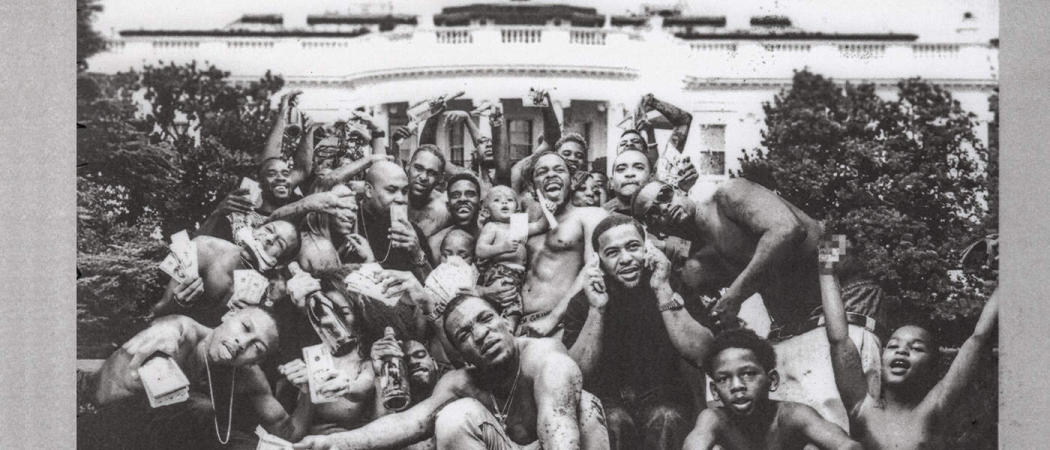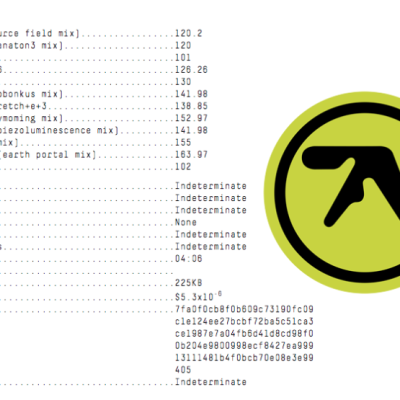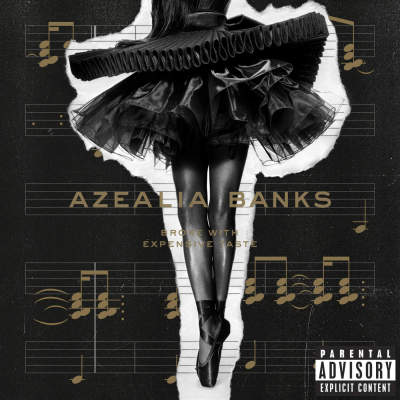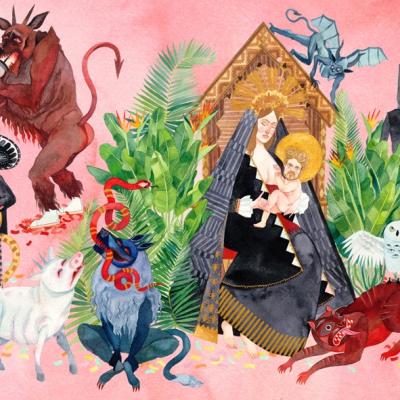"I remember you was conflicted, misusing your influence." Kendrick Lamar repeats this phrase several times throughout his new record To Pimp a Butterfly. The phrase eventually develops into a great, sprawling poem, but the immediate effect of that first utterance cannot be overstated. Not content to rest on his laurels after his meteoric rise to the top, To Pimp a Butterfly is a major social, political and personal statement from an artist with a lot to say. We should have expected this from Lamar. Ever since the soft-spoken, but unswervingly real and completely un-fuck-with-able rapper's 2012 major label debut was immediately declared one of the greatest rap records of all time, he's been on top. He could have done anything. And he did.
Rather than follow up on the mainstream rap promise of hits like "Bitch, Don't Kill My Vibe" and "Swimming Pools (Drank)" Lamar has delved deep into the heart of American black music, namely jazz, soul and funk, to make this wild and woolly eighty minutes of genre-transcendent hip-hop. One of the first voices we hear on the record is that of George Clinton, the mastermind behind afro-futurist funk collective Parliament-Funkadelic. But "Wesley's Theory" is no throwback, featuring busy, thrillingly cluttered production from Flying Lotus and contributions from bass prodigy Thundercat. Kendrick is the star here, but he surrounds himself with a galaxy of collaborators who make this record the best it can be.
Throughout, Thundercat's bass brings impeccable funk and melodic basslines, and memorable turns from Snoop Dogg and Rapsody as feminine counterpoint on the gentle "Complexion (A Zulu Love)" complement Lamar's raps perfectly. But Kendrick is still the shining star at the centre of the record's far-reaching orbit. The most immediate point of reference for this album is D'Angelo's The Black Messiah, which was sprung upon us all of a sudden this past December. Ignoring current trends in R&B, D'Angelo's album was an uncompromising triumph, just as this one is. The record balances the contributions of producers like the aforementioned Flying Lotus, or Knxwldge, who adds the sheen of contemporary electronica to stand-out track "Momma," with samples from hip-hop staples James Brown and the Isley Brothers and contributions from the likes of Pharell Williams, making its backwards-looking but forward-thinking aesthetic immediately recognisable as Kendrick Lamar and no one else.
Lacking the clear conceptual heft of the autobiographical good kid, m.A.A.d city, To Pimp a Butterfly is nonetheless a smartly made and structured record. The dark and tormented "u" which finds Kendrick rapping as if he is at any moment likely to break down sobbing is sister to the single "i" which was released last year and appears here with updated production that makes it a pinnacle of life-affirming joy near the album's conclusion. On "i" Kendrick plays peacemaker to the agitated voice of "u," unleashing his inimitable flow over the sparkling funk of The Isley Brothers' classic "That Lady" in perfect contrast to its claustrophobic and paranoid twin. Lamar's love of a kind of lyrical cubism - his desire to represent and juxtapose multiple layers of consciousness or points of view - is perhaps his strongest asset. Take for example a simple couplet from "The Blacker the Berry": "I'm African-American, I'm African / I'm as black as the heart of a fuckin' Aryan."
Lamar's lyrics and themes are too complex and varied to unpack here. From the album art down, race relations and the treatment of African-Americans and other racial minorities by authorities and by the media are the most obvious thematic link, but themes of love - love of oneself, benevolence toward other people and romantic love - also appear. In moving from the personal into the complex, abstract and sometimes cosmic lyrical concerns here, though, Lamar has lost none of his focus. To Pimp a Butterfly is a tight, compelling album and despite its inflated length it is still a cohesive and effective collection. Hooks abound in both the supremely melodic production and in the vocals that see Lamar singing more than ever before. He never lets his rhetoric get in the way of his flow; even without understanding a word of the lyrics, there is a giddy thrill in hearing the way Lamar approaches each syllable with constantly morphing, evolving inflection.
In the album's last minutes, the lengthy closer "Mortal Man" fades away into a spoken exchange. It may take a while to realise, but Lamar is talking to a ghost - he has placed his own spoken thoughts alongside an archival recording of the late hip-hop legend Tupac Shakur. This ending provides valuable insight into who Kendrick Lamar is as an artist. Despite his many successes and enormous acclaim, he still considers himself a disciple to those who came before - he searchingly asks questions of Tupac - and though this record may be an enormous display of unbridled talent, it ends with Lamar seeking ways to improve himself and his craft. The young rapper's humbleness is the final piece of what is a near-perfect record. Refreshingly bold, adventurous and smart, To Pimp a Butterfly is a giant step forward for Kendrick Lamar and for rap music as a whole.





